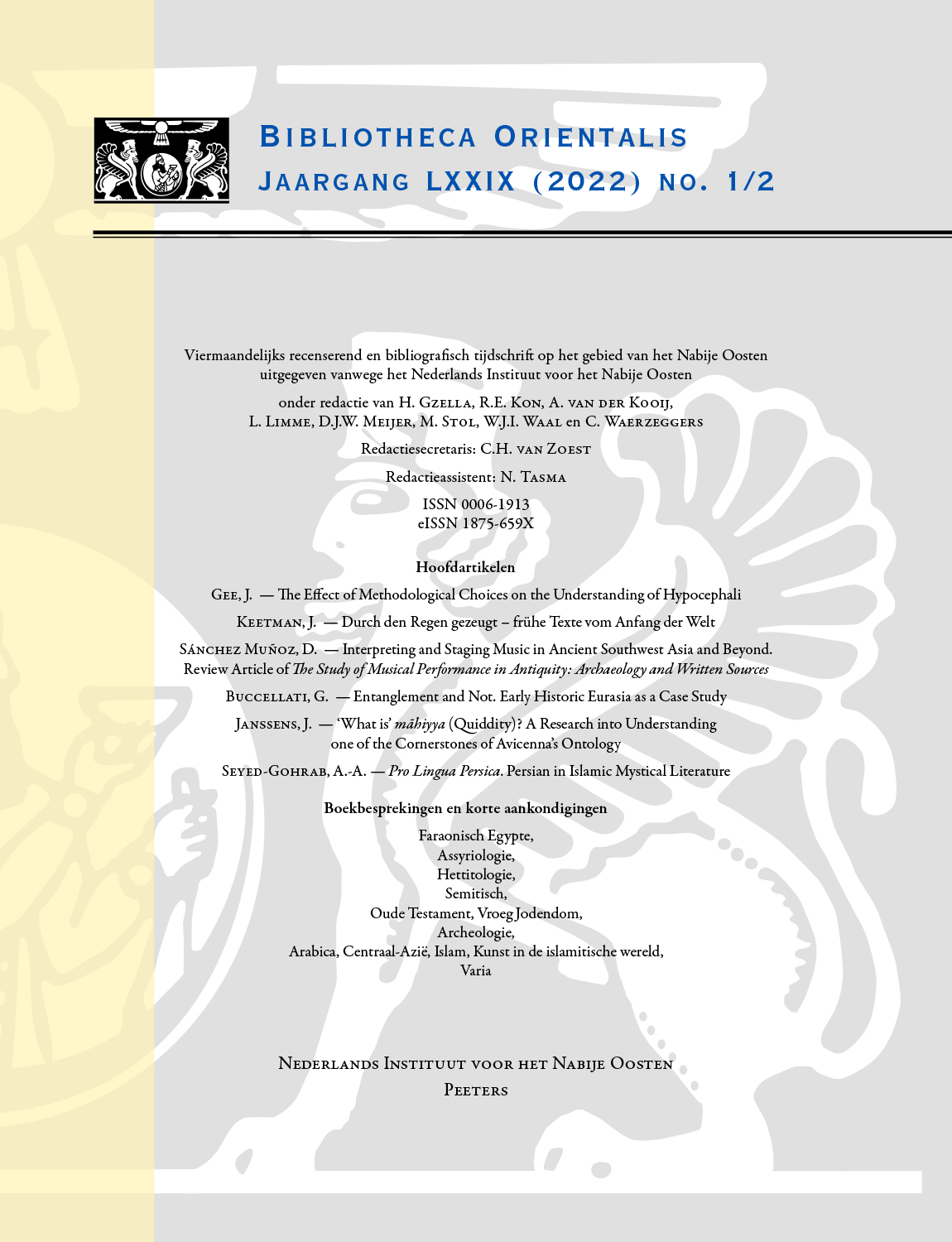 previous article in this issue previous article in this issue | next article in this issue  |

Preview first page |
Document Details : Title: dŠaggāšu ('Murderer'), the Demon from the Steppe Author(s): FINCKE, Jeanette C. Journal: Bibliotheca Orientalis Volume: 70 Issue: 1-2 Date: 2013 Pages: 17-24 DOI: 10.2143/BIOR.70.1.2983449 Abstract : Diagnostic and ritual texts of the second and first millennium BC write ša-ag-ga-a-šum or (DINGIR/d)šag-ga-šu/i as a possible cause of a disease that is, in most cases, fatal. Several interpretations for the reading have been suggested: DINGIR šaggāšû, 'the murderous god', šaggāšu, the 'murderer' as a living human being, (d)šaggāšu, the spirit of a deceased 'murderer', or the demon Šaggāšu. New exami nation of the evidence makes clear that all these attestations refer to the demon Šaggāšu, who affects people with a fatal disease that can also be called šaggāšu; the disease is always written without d. The symptoms described in diagnostic texts give an idea of the nature of this disease. Collations reveal that in the Old Babylonian period, Šaggāšu is said to dwell in the steppe in order to afflict people, even representing the 'crime of the steppe' (ḫiṭīt ṣēri). In later periods, Šaggāšu has developed into a demon that has most likely found his place in the entourage of the god Zababa in Kiš. |
 |


